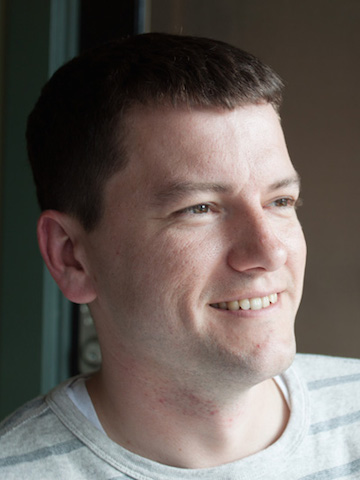Course Overview
Course Description
This course provides an introduction to human-computer interaction and the design process. Students will learn methods and skills for designing and prototyping interactive systems. The course covers a design process from the initial formulation of a design problem to creation of digital prototypes. The course structure is a mix of lectures, classroom activities, and design critiques by peers and course staff. The course is overwhelmingly organized around a group project, in which students:
- Ideate and Propose Design Problems
- Study Existing Practices and Challenges
- Explore Potential Design Opportunities and Tradeoffs
- Evaluate and Improve a Design
- Communicate Their Problem and Resulting Design
Learning Objectives
- Process-Focused Perspective on Interaction Design
- Design Research Methods and Skills
- Task-Focused Scenario Development, Sketching, and Storyboarding
- Rapid Prototyping and Iteration
- Critical Perspective on Design Solutions
Course Staff
Basic Information
Contact:
- Email course staff at cse440-staff [at] cs.washington.edu
Class Time & Location:
- Tuesdays & Thursdays, 11:30-12:50
NAN 181
Check the calendar for non-standard times or locations.
Section Times & Locations:
- Fridays, 10:30-11:20
MGH 295 , with Qisheng and Jena - Fridays, 11:30-12:20
MGH 295 , with Qisheng and Jena - Fridays, 1:30-2:20
MGH 295 , with Jesse and Richard - Fridays, 2:30-3:20
MGH 295 , with Jesse and Richard
Check the calendar for non-standard times, locations, or staffing.
Office Hours:
- James, Tuesdays, see calendar for time,
Allen 632 - Qisheng, Wednesdays 10:00 to 11:00,
Allen 4th Floor Breakout - Jesse, Thursdays 2:00 to 3:00,
Allen 4th Floor Breakout
Scheduled office hours require that you email beforehand (i.e., at least one hour beforehand). If nobody has emailed regarding the office hour, staff may not be present. Hours are scheduled most weeks, but check the calendar. Other meetings are by appointment.
Project Theme
The theme for projects in this course is self-tracking and everyday interaction with personal intelligences.
People have long sought to better understand themselves, but continuing technology advances enable new approaches. Students will examine problems people encounter in gathering and gaining value from personal data, then explore how a combination of design and machine intelligence can help go beyond simple data fetishes to help people in using personal data as part of reaching their goals.
Understanding and designing for self-tracking is also known as personal informatics:
Personal informatics systems are systems that help people collect personally relevant information for the purpose of self-reflection and gaining self-knowledge.
Self-tracking and personal informatics are related to the
Self-knowledge through numbers.
Instead of limiting self-tracking to dashboards for an isolated self-analyst, consider the many different ways people might gather and interact with personal data, together with how machine intelligence might add meaningful value to these activities.
Tracking can therefore take many forms:
- wearable sensors
- phone and watch applications
- appliances and other artifacts in the environment
- hybrid and multi-device forms (e.g., mobile capture with later annotation or review)
Tracking can include many social contexts:
- people seeking help from peers (e.g., social sharing, support networks)
- people seeking help from experts (e.g., health providers)
- co-located relationships (e.g., families, friends, co-workers)
- remote relationships (e.g., families, friends, co-workers)
- communities organizing (e.g., people in a building, community volunteers)
Tracking can explore new forms of interaction:
- conversational interfaces
- tangible interfaces
- ubiquitous computing interfaces
Any problem where people gather or seek value in personal data introduces opportunities and challenges in designing for effective interaction around that data. It can also present opportunities and challenges in how integrated machine intelligence can provide meaningful value to that individual.
Project Structure
Projects are organized around four assignments, each consisting of several milestones:
Assignment 1 - Project Proposal Assignment 2 - Getting the Right Design Assignment 3 - Getting the Design Right Assignment 4 - Communicating the Design
Samples from Prior Offerings
Samples from prior offerings include:
Grading
Strive to do good work because you care about your own opportunities to learn, including the opportunities this course provides working with a group in an intensive project.
The overall course grade will be computed as follows:
- 65%: Group Project
- 3%: Assignment 1, Project Proposal
- 1a: Proposal Brainstorm (0.5%)
- 1b: Project Proposal (2.5%)
- 20%: Assignment 2, Getting the Right Design
- 2a: Design Ideation (graded as part of Participation)
- 2b: Design Research Plan (2%)
- 2c: Design Research Check-In (1%)
- 2d: Design Research Review (2%)
- 2e: Task Review (1%)
- 2f: Design Check-In (3%)
- 2g: Design Review (1%)
- 2web: Getting the Right Design (10%)
- 18%: Assignment 3, Getting the Design Right
- 3a: Paper Prototype (2%)
- 3b: Heuristic Evaluation (graded as part of 3c)
- 3c: Usability Testing Check-In (2%)
- 3d: Usability Testing Review (2%)
- 3e: Digital Mockup (2%)
- 3web: Getting the Design Right (10%)
- 12%: Assignment 4, Communicating the Design
- 4a: Initial Poster and Pitch (2%)
- 4b: Initial Video (2%)
- 4c: Final Poster and Pitch (4%)
- 4d: Final Video (4%)
- 12%: Presentations
- 2p: Getting the Right Design Presentation (5%)
- 3p: Getting the Design Right Presentation (5%)
- Individual Presentation Score (2%)
- 3%: Assignment 1, Project Proposal
- 10%: Participation
- 25%: Exam
Each assignment will also provide a point breakdown intended to convey how it will be graded. Design is an inherently subjective practice, and so grading in this course is necessarily subjective. The stated project requirements are the minimum, intended to leave room for groups to earn strong grades through strong work.
Because the course is designed around feedback on project milestones, grades given to those milestones indicate that you have invested sufficient effort and insight at the time of the milestone. You will get feedback and are expected to continue acting upon that feedback in your design process. The bulk of project grades is therefore attached to the final deliverables, which are evaluated on their quality.
Submission
Many assignments are due "the night before class". We will implement this in Canvas as 11:59pm.
This is a fast-paced course, with many elements of the project depending on prior elements. Similarly, the course staff's ability to give feedback relies on timely submissions (e.g., course staff will often review your submission in the morning before section). Submitting the day of class, just before class, or in class is therefore generally unacceptable. Course staff will attempt to be flexible where appropriate, but any late submission risks receiving zero credit.
Submissions will generally be in PDF format (i.e., not plain text, not Word). The PDF should be printable, containing everything we need to review and grade the assignment (e.g., your name). The course staff has a large number of submissions to manage, so format and completeness issues are problematic.
Groups and Contribution
We expect groups to take collective responsibility and to resolve any coordination issues. The course staff is always happy to make suggestions with regard to your effort and coordination. If an issue needs to be raised with the course staff, we expect it to be raised early enough to be addressed.
In addition to encouraging groups to be pro-active, we make several efforts to capture contribution:
- We will take attendance in lectures and sections that include a project-related activity. The project and your commitment to your group are a key component of this course. If you will need to be absent, email your group and the course staff beforehand.
- We will collect contribution statements throughout the project sequence.
- We will collect confidential group feedback at two major points in the project sequence.
This information will be factored into an individual's grade for Participation. If necessary, we may also further adjust an individual's grade for the Group Project.
Contribution Statements
Group submissions will require a contribution statement. This statement should indicate the name of each member of your team, the percentage of effort that each member contributed in that specific assignment, and a corresponding list of specific activities. An example contribution statement might be:
- Name 1: 40%, researched the background of the problem, outlined the content of the document, wrote the first version of one paragraph, selected the images to be included
- Name 2: 15%, conducted 3 interviews (with Name 4) and took notes
- Name 3: 20%, wrote the first version of the background section, made sure the final document was submitted
- Name 4: 25%, organized the group meeting, conducted 3 interviews (with Name 2), put together the first draft of the document's results section
Contribution statements should be submitted together with your milestone submission, as a separate PDF using the Canvas "Add Another File" capability. When a contribution statement is required, we will not grade submissions until the contribution statement is provided.
You should discuss and agree upon this statement of what you each contributed and how much this contributed to the overall assignment.
Contribution statements are intended to support your own reflection as a team as well as staff awareness of your efforts. The staff does not necessarily expect each person to contribute equally to each assignment, but does expect all members will appropriately contribute over the quarter and will work as a team to support each other. The staff also understands that percentages are incomplete and subjective, so we gather them only as a summary indication and will not use them directly in any grade calculation.
If you feel your team's contribution statement does not appropriately convey team contributions, you may email the course staff. If you feel a member of your team is not contributing appropriately, you may email the course staff.
Group Feedback
Course staff will request confidential group feedback at the midpoint and the conclusion of the project sequence.
Submit this using the form distributed to the class by email.
Accommodations and Additional University Policies
Additional university policies apply (e.g., regarding Academic Integrity, Conduct, Disability Resources, Religious Accommodations):
Please do not hesitate to contact the course staff regarding these or any other accommodations.
Course Website
This course website lives on GitHub:
You can submit pull requests to update the website, and you will publish elements of your project to the website via pull request.




